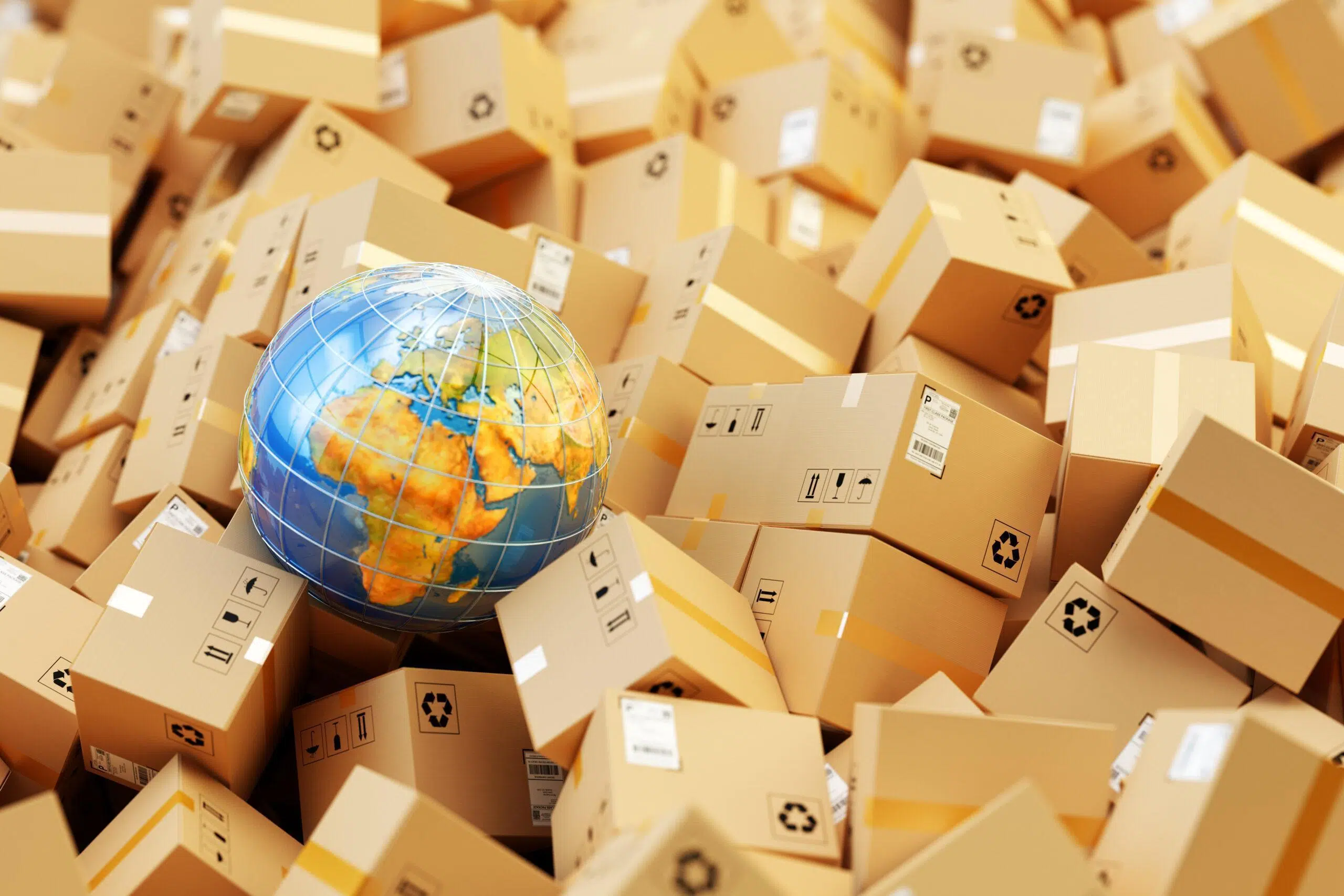Here’s everything about Amazon intentionally delaying shipping:
Amazon does sometimes intentionally delay shipping in a couple of ways and for a wide variety of reasons.
They might intentionally schedule some shipments to be slow in order to make the whole system more efficient and to incentivize Prime membership.
They might delay a package en route to save money on priority boxes.
So if you want to learn all about intentional shipping delays by Amazon, then this article is for you.
Let’s get started!
- Amazon Package Arrived Open and Empty: 3 Crazy REason’s why?
- What Does Customs Clearance Completed Mean on Amazon?
- Amazon Says Shipping Now: Meaning?
- Reusing Amazon Prime Envelopes: How to?
- Amazon Says Package Has Left Carrier Facility: Meaning?
- Amazon Says Package Arrived at a Carrier Facility: Meaning?
- Amazon Not Taking Out Money of Order: How Come?

What Is Amazon?

Amazon is one of the largest and most successful companies in history.
I’m going to assume that you’re at least familiar with them to some degree.
Instead of giving you a breakdown of the history of Amazon or something like that, I’m going to hit a few notes that are relevant to today’s discussion.
As you know, Amazon is a giant online store that allows you to order just about anything, and it will be shipped right to your door.
In order for that to work, Amazon has to manage a lot of shipping.
Much of that is outsourced to major carriers like USPS, UPS, FedEx, and many others.
If you order a lot of stuff through Amazon, you’ll see packages arrive via all of the major carriers.
But, Amazon also handles a lot of its own shipping.
Overall, Amazon shipping is a big, jumbled mess of in-house and outsourced shipping.
Today, we’re specifically talking about Amazon’s shipping resources.
In some cases, Amazon will handle all of the shipping and delivery for a single package without any outsourced companies involved at all.
In other cases, they won’t.
Talking about the different shipping policies across all of those different companies would take forever, so we’re only going to talk about Amazon’s role in the process.
It’s a little simplified, but it will help highlight how Amazon makes decisions around shipping and what that might mean for you as a customer.
What Is an Intentional Delay?

This question is a little more complicated than it might seem at first.
We could ask if someone at Amazon is on a power trip and delaying shipments just for fun.
That really doesn’t seem to be the case.
But, there are circumstances where intentional delays might make sense.
So, let’s clarify a little bit.
Does Amazon intentionally ship orders behind schedule?
Do they intentionally schedule some orders to ship more slowly?
Is there a combination of the two?
The answer is that all of these things do happen in some cases, but they might not work the way you expect them to.
So, I’m going to take you through each idea in detail and explain why Amazon might practice those behaviors and why they might shy away from other kinds of delays.
Does Amazon Intentionally Schedule Some Shipments to Be Slower?

Let’s start here.
First, it’s pretty obvious to say yes.
If you’re shopping on Amazon, you can see one shipment schedule for Prime members and another schedule for others.
You can also see different schedules for expedited shipping and so on.
Clearly, the same package can move at different speeds depending on a few factors, so the real question here is “Why?”
It might seem frustrating and nefarious—and some of it is definitely money-motivated—but different shipping schedules aren’t all about the Benjamins.
There are some practical reasons to move items at different rates that you might not have considered.
Optimizing Volume Shipping
The big thing here is that shipping comes with different priorities.
You’ve been to the post office before.
This isn’t a new concept.
Priority shipping is important to Amazon and any other logistics company.
Simply put, there’s too much stuff moving for it all to travel at the same pace.
If everything had the same priority, a lot more things would arrive late (as in behind the guaranteed schedule).
To help with this, Amazon (and other companies) uses varying priority levels.
The priority for any given box is determined by a few things.
The one you know about is priority, or expedited, shipping.
If you pay extra, the box is supposed to arrive sooner.
It’s a pretty simple concept, and if Amazon is going to charge for faster shipping, they’re going to try really hard to keep that money by avoiding refunds for being late.
But, there’s another aspect of priority that is easy to overlook: triage.
Priority for any given package can be adjusted based on extenuating circumstances.
Here’s an easy example.
It takes a lot longer to ship something from Indonesia to Germany than from California to Arizona.
So, Amazon builds shipping schedules around these obvious facts.
Even with expedited services, international shipping is going to be slower than ordering things that are already in stock at your local Amazon distribution center.
This is the idea of triage.
Amazon is scheduling some things for slower delivery because they quite literally have to.
On top of that, Amazon has to make adjustments according to volume.
Even expedited shipping is going to have a slower guarantee time during the Christmas season than in the middle of May.
Those adjustments are necessary solely because of volume, and that’s why it’s a major factor in shipping priority and delivery expectations.
So, yes, money is a factor, but it’s actually a minor factor compared to the elements of triage.
Why Doesn’t Amazon Ship Everything at the Same Priority? (2 Reasons)

Ok. So Amazon has to make allowances for long distances and high volume, but aside from that, why don’t they ship everything at the same priority?
Surely, allowing for expedited shipping and other tiers of service is just about raking in cash, right?
Once again, the full answer is a little more complicated.
Money is part of the equation, and I’ll walk you through that in a bit.
But, there are non-monetary contributions to this idea.
The truth is that even if expedited shipping didn’t cost extra, Amazon would still want different priority tiers.
#1 Efficiency

The non-monetary reason really boils down to efficiency, and that is probably best explained with an analogy.
Have you ever driven on the highway?
Did every car move at the same speed?
If so, you were in a traffic jam, and it was probably unpleasant at best.
When various things can move at different speeds, it helps to prevent bottlenecks.
This is true for highway traffic (which is why you have passing lanes), and it’s true for shipping and logistics.
When you have different lanes of travel moving at different speeds, then you have an avenue to move around slow traffic when it matters.
Creating different priorities for shipping basically creates a passing lane in your supply chain that allows you to speed up some things when a bottleneck or delay occurs.
The crux of all of this is that the standard shipping priority is intentionally slower than the fastest possible speed specifically so there is wiggle room in the delivery mechanism.
The ability to expedite things on command helps Amazon avoid extra delays when things don’t go according to plan.
#2 Incentive

The idea of having a priority lane to accommodate unexpected delays makes sense, but it’s also not the whole story.
Amazon, along with every other shipping company in the world, is of a simple opinion.
If there is a fast lane, why not charge people to access it?
With Amazon, this is on a different level.
Your average purchase will move at its standard speed.
But, you can consistently get faster shipping if you become a Prime member.
Faster shipping is intended as an incentive for people to pay to join Prime.
It’s that simple.
Additionally, Amazon does make money off of expedited shipping.
So, they want a real incentive there as well.
If delivery speed is important to you, you’ll pay extra for it, and they like pocketing that extra money.
Putting these two ideas together, priority shipping exists so that there are ways to overcome obstacles and avoid delays.
But since it exists, Amazon tries to make extra money off of it.
Does Amazon Intentionally Deliver Items Late?

So far, we’ve only covered one of the two original ideas.
Clearly, Amazon does schedule some boxes to move slower than others.
There’s no getting around that.
But, does Amazon ever delay a box, causing it to be late, on purpose?
Would they pull your box off of a truck to make room for a Prime delivery that is behind schedule?
In a word, yes.
This is something that happens, but it’s not something that Amazon specifically wants to do.
In most cases, Amazon stands to lose money by getting packages to people late.
They might have to refund shipping fees and take other hits to apologize for failing to meet a delivery schedule.
The situation isn’t fun for them.
Even so, there are times when your package might be intentionally late.
This isn’t a screw you in particular kind of thing.
Instead, Amazon is sometimes beaten up by unexpected shipping delays.
Abnormal weather, sudden increases in shipping volume, rail worker strikes, international conflicts, and all kinds of other things can make a bunch of packages that were originally on time suddenly late.
In an emergency, Amazon might intentionally take a low-priority package off of the truck (so to speak) in order to make room for a high-priority package.
The idea is that they’ll lose less money if your box is late instead of the box with a bunch of premiums on it.
This is a lot like when an airline has to cancel flights due to weather and suddenly a bunch of people are stuck.
They might have to ask people to give up seats on a flight in order to get everyone out as efficiently as possible.
It’s not fun for the airlines, and it’s not fun for Amazon, but when a logistics company is trying to push things to the limit, there often isn’t enough wiggle room in the system (despite things like priority shipping).
In those cases, they’ll choose the path of least financial loss, and that might include making low-priority packages late for the sake of high-priority shipping.
- Amazon Package Arrived Open and Empty: 3 Crazy REason’s why?
- What Does Customs Clearance Completed Mean on Amazon?
- Amazon Says Shipping Now: Meaning?
- Reusing Amazon Prime Envelopes: How to?
- Amazon Says Package Has Left Carrier Facility: Meaning?
- Amazon Says Package Arrived at a Carrier Facility: Meaning?
- Amazon Not Taking Out Money of Order: How Come?

